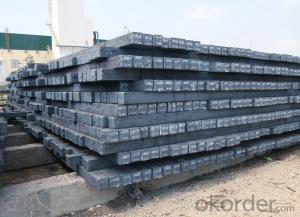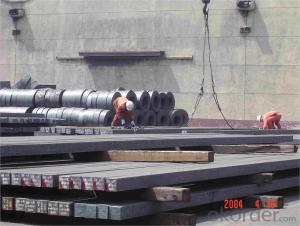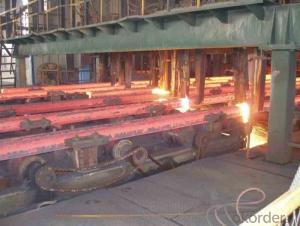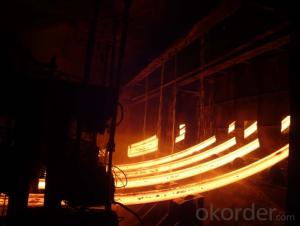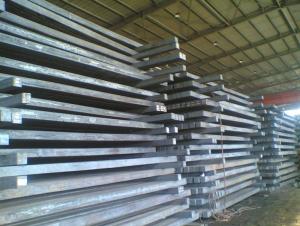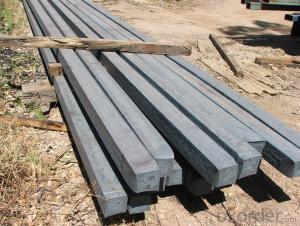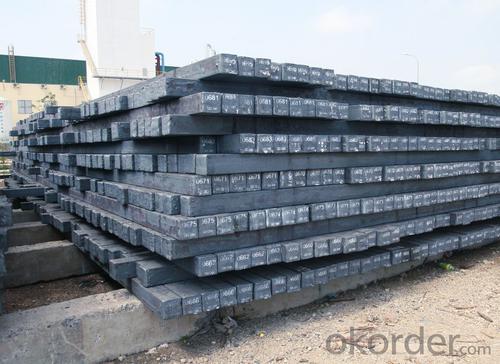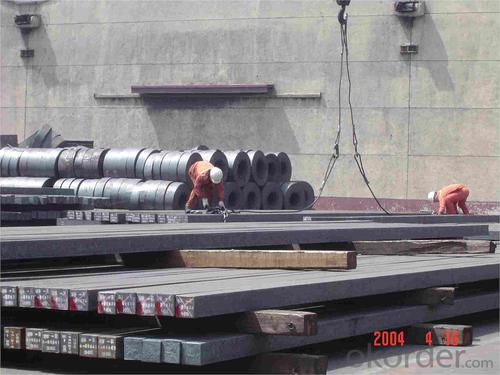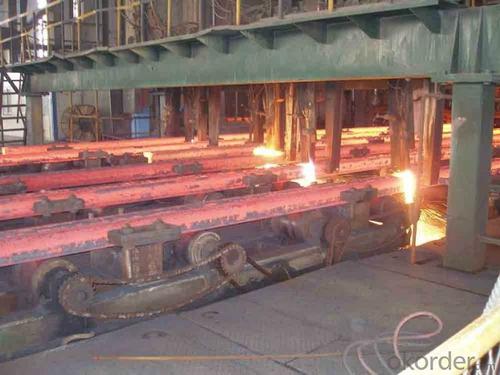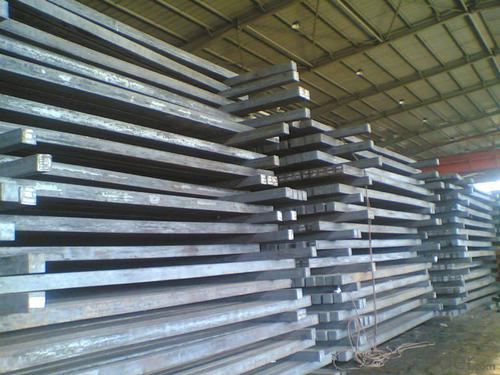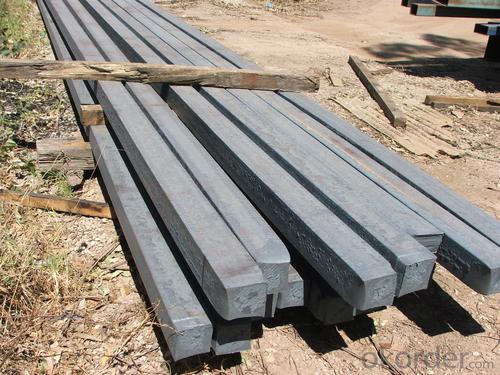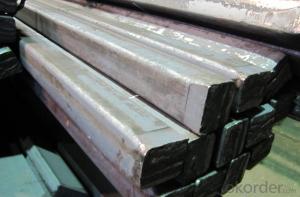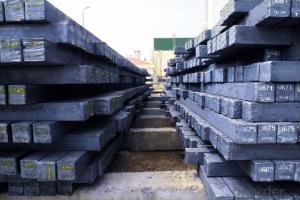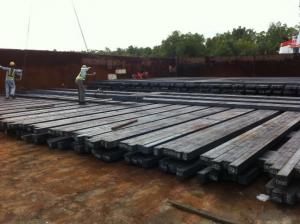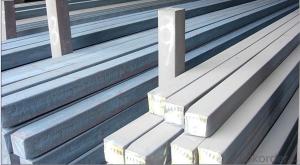Q235/3SP 160MM Blast Furnace Hot Rolled Steel Billet
- Loading Port:
- Tianjin
- Payment Terms:
- TT OR LC
- Min Order Qty:
- 2000 m.t.
- Supply Capability:
- 30000 m.t./month
OKorder Service Pledge
OKorder Financial Service
You Might Also Like
Description of Q235/3SP 160MM Blast Furnace Hot Rolled Steel Billet
Our hot dip galvanised steels consist of a steel substrate with a metallic zinc coating applied by means of a continuous hot dip galvanising process. Metallic zinc coatings are available in steel grades ranging from steel for bending and deep drawing applications, to structural steels and high yield strength steels.
A glossy surface finish obtained under specific skin-pass conditions (either non-skin-passed or skin- passed with smooth cylinders to obtain low roughness) can be provided if required at time of enquiry.
Advantage of Q235/3SP 160MM Blast Furnace Hot Rolled Steel Billet
Uncoated CR steel sheet With the features of in line with the international highest standards in demension and shape, excellent surface finish and properties, the products are mainly used in home appliance and automobile industries.
Galvanized steel sheet(include HDG and EG)
With the features of good corrosion resistance, the products are mainly used in automobile, home appliance, electronics, building and machinery manufacture industries, etc.
Precoated steel sheet With the features of enviromental protection and good processablility, long lasting surface durability, rich in colors, the products are maily used in building, home appliance and furniture industries, etc.
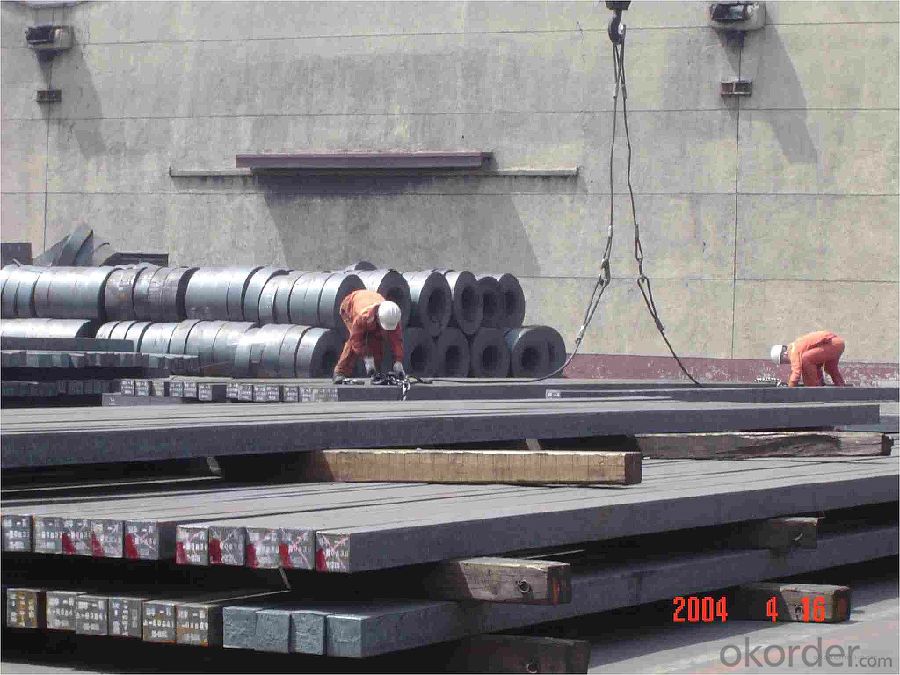
Applications of Q235/3SP 160MM Blast Furnace Hot Rolled Steel Billet
Our hot dip galvanised steels can be used in a very wide range of applications for industrial markets, both indoors and outdoors. Some of the most common applications are:
Building: wide sections for roofing and cladding, doors, door frames, metallic ceilings, partitions, structural members etc
Domestic appliances: all appliances for this sector (both white and brown goods) are manufactured with hot dip galvanised steels
Miscellaneous: electrical cabinets, aeraulic components, air conditioners, road signs etc
Zinc hot dip galvanised steel is suitable for contact with foodstuffs under certain conditions, as specified in European directive 89/109/EEC and French standard NF A 36-712-1. Please contact us for further information on this subject.
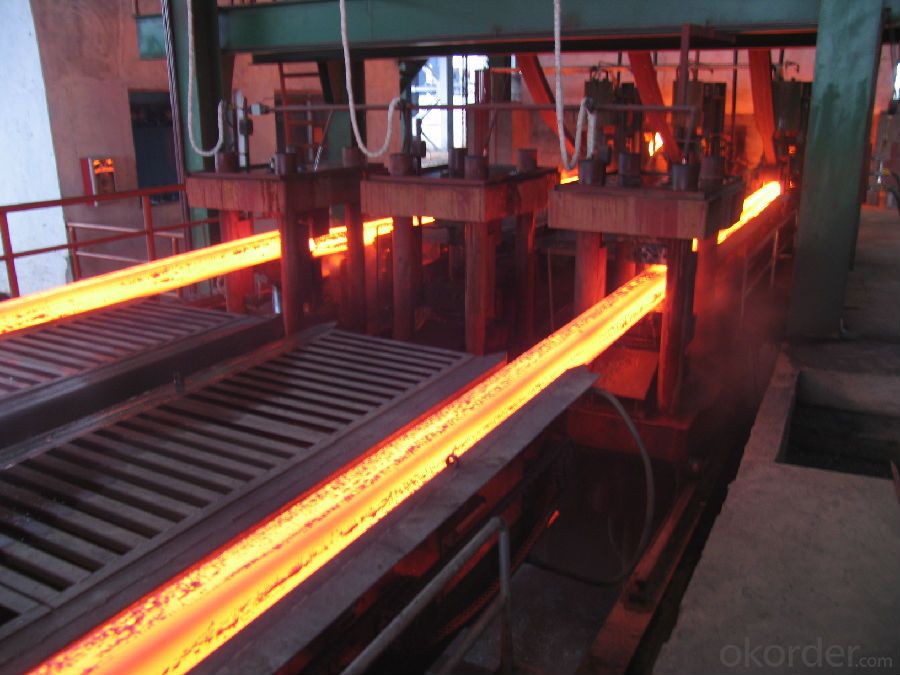
Specifications of Q235/3SP 160MM Blast Furnace Hot Rolled Steel Billet
Quality | Q/BQB 440-2003 | JIS G3312-1994 JIS G3321 | EN 10326-2004 | ASTM A653-02a |
EN 10327-2004 | (BASE PLATE) | |||
(BASE PLATE) | ||||
Commercial Steel | DC51D | SGCC SGLCC | DX51D+Z DX51D+AZ | CS Type A/B/C |
Forming Steel | St01,St02,St03 | SGCD1 SGLCD1 | FS Type A, Type B | |
Drawing | DC52D /DC53D | - | DX52D+Z DX52D+AZ | DDS TYPE A/C |
Steel | DX53D+Z DX53D+AZ | |||
Structural | S280GD (StE28) | SGC400 SGLC400 | S280D+Z DX54D+AZ | SS275 |
Steel | S350GD (StE34) | SGC440 SGLC440 | S350D+Z S350D+AZ | SS340 Class1 |
FAQ of Q235/3SP 160MM Blast Furnace Hot Rolled Steel Billet
We have organized several common questions for our clients,may help you sincerely:
1. How Can I Visit There?
Our company is located in Tianjin City, China, near Beijing. You can fly to Tianjin Airport Directly. All our clients, from home or aboard, are warmly welcome to visit us!
2. How Can I Get Some Sample?
We are honored to offer you sample.
3. Why choose CNBM?
Our delivery time about 15-20days for standard sizes, if you have other requirements like hardness, quanity and width ,it is about 20-40days. But don't worry we also try our best for the delivery time ,because time longer and our cost is higher.
- Q: How are steel billets used in the manufacturing of power generation equipment?
- The manufacturing of power generation equipment relies heavily on steel billets, which are indispensable raw materials. These billets, cast from molten steel, take the form of large rectangular or square-shaped semi-finished steel products. They are then either hot rolled or forged to achieve their final shape. Within the power generation equipment context, steel billets are primarily employed in the construction of turbine components, such as turbine blades and rotors. Additionally, they are used in the fabrication of generator casings and other structural parts. The exceptional strength and durability of steel make it the ideal material for these critical components, which must endure high temperatures, pressure, and rotational forces. The process commences with the careful selection of a suitable grade of steel billet, based on the specific requirements of the power generation equipment. Subsequently, the billets are heated to an appropriate temperature and then forged or hot rolled to shape them as desired. This process necessitates precise techniques, such as machining, cutting, and shaping, to achieve the required dimensions and surface finish. Once the turbine components and other parts are formed from the steel billets, they undergo further treatments, including heat treatment, surface coating, and machining. These treatments aim to enhance their mechanical properties and ensure compatibility with the power generation system. Ultimately, the final products are assembled into power generation equipment, which may consist of gas turbines, steam turbines, wind turbine components, or generator sets. Steel billets play a critical role in the manufacturing of power generation equipment as they provide the necessary strength, durability, and performance required for efficient and reliable operation. The quality and precision involved in the production of steel billets directly impact the overall performance and lifespan of the power generation equipment, making them an essential component in the industry.
- Q: How are steel billets used in the manufacturing of telecommunications equipment?
- Steel billets are an essential component in the manufacturing of telecommunications equipment. These billets serve as the raw material that is shaped and transformed into various components used in telecommunications infrastructure. One of the primary uses of steel billets in telecommunications equipment manufacturing is in the production of towers and masts. These structures provide the necessary support for antennas and other equipment used in transmitting and receiving signals. Steel billets are melted and then forged or rolled into the desired shape to form the structural members of these towers, ensuring their strength and stability. Additionally, steel billets are also used in the manufacturing of cable trays and cable management systems. These components are crucial for organizing and protecting the vast network of cables that are used in telecommunications systems. Steel billets are processed and fabricated into cable trays, brackets, and supports, providing a sturdy and durable solution for managing the complex web of cables. Furthermore, steel billets find application in the production of enclosures and cabinets used to house sensitive telecommunications equipment. These enclosures provide protection from environmental factors such as dust, moisture, and temperature fluctuations. Steel billets are molded and shaped into the desired size and design, ensuring a robust and secure enclosure for the equipment. In summary, steel billets play a vital role in the manufacturing of telecommunications equipment. From towers and masts to cable trays and enclosures, these billets provide the foundation and structural integrity necessary for the reliable operation of telecommunications infrastructure.
- Q: How are steel billets measured?
- Steel billets are measured using various techniques and tools to ensure accurate dimensions and specifications. One common method is through the use of calipers or micrometers. These tools allow for precise measurements of the billet's diameter, length, and any other required dimensions. In addition to physical measurements, steel billets may also undergo non-destructive testing methods such as ultrasonic testing or eddy current testing. These techniques can detect any internal defects or inconsistencies in the billet, ensuring its quality and integrity. Furthermore, steel billets are often weighed to determine their mass. This can be done using different weighing scales or load cells, depending on the size and weight of the billet. The weight measurement is crucial in determining the billet's mass per unit length, which is important for calculating its density and other mechanical properties. Overall, the measurement of steel billets is a crucial step in the manufacturing process, as it ensures that the billets meet the required specifications for further processing and usage in various industries such as construction, automotive, and manufacturing.
- Q: What is the standard size of a steel billet?
- The specific requirements and industry standards may cause the standard size of a steel billet to fluctuate. Generally, these steel billets are rectangular and their dimensions usually fall within the range of 100mm x 100mm to 200mm x 200mm. The length of a steel billet also tends to vary, though it commonly measures approximately 6 meters. It is worth mentioning that these dimensions are not set in stone and can be tailored according to the intended usage and manufacturing procedure.
- Q: Can steel billets be used in the production of agricultural equipment?
- Yes, steel billets can be used in the production of agricultural equipment. Steel billets are semi-finished products that are typically cast in a continuous casting process. They can be further processed into various shapes and sizes to manufacture agricultural equipment such as plows, cultivators, harrows, seeders, and other farm machinery. The use of steel billets in agricultural equipment offers several advantages. Steel is known for its strength, durability, and resistance to wear and tear, making it suitable for heavy-duty applications in the agricultural industry. Additionally, steel can withstand harsh environmental conditions, ensuring that the equipment remains reliable and functional even in challenging farming environments. Moreover, steel can be easily molded and fabricated into different forms, allowing for the customization of agricultural equipment to meet specific requirements. Overall, the use of steel billets in the production of agricultural equipment contributes to the efficiency, productivity, and longevity of farming operations.
- Q: How do steel billets contribute to the manufacturing of consumer goods?
- Consumer goods manufacturing heavily relies on steel billets, which serve as essential raw materials for a diverse array of products. These billets, formed through the casting process, are semi-finished steel items. After being heated, they are shaped into specific forms, depending on their intended applications. Steel billets significantly contribute to consumer goods manufacturing, particularly in the production of various metal parts. These parts can be found in automobiles, appliances, machinery, and furniture, among others. By utilizing steel billets as starting materials, manufacturers can create components that possess strength, durability, and resistance to wear and tear. Consequently, the final consumer goods have a prolonged lifespan and can withstand everyday usage demands. Additionally, the construction industry frequently employs steel billets for the fabrication of structural steel beams, columns, and other building materials. These components play critical roles in constructing infrastructure, residential buildings, commercial complexes, and other structures. Steel's high strength-to-weight ratio makes it an ideal material for these applications, providing essential structural support while minimizing weight and cost. Apart from their strength and durability, steel billets also offer versatility in terms of formability and machinability. This means that they can be effortlessly shaped, welded, and cut into various sizes and designs, enabling manufacturers to customize steel components to meet specific consumer requirements. This flexibility allows for the production of a wide range of consumer goods, ranging from small intricate parts to large complex structures. The use of steel billets in consumer goods manufacturing also contributes to sustainability. Steel is a highly recyclable material, and the production of steel products using recycled steel requires significantly less energy and resources compared to using virgin materials. This reduces the environmental impact associated with consumer goods production and promotes a more circular economy. In conclusion, steel billets are essential components in consumer goods manufacturing. Their strength, durability, versatility, and recyclability make them an ideal material choice for producing a diverse range of products that fulfill consumers' needs and expectations.
- Q: What is the role of steel billets in the manufacturing of industrial boilers?
- The role of steel billets in the manufacturing process of industrial boilers is crucial. These billets act as the raw material from which the various components of the boiler are formed. Industrial boilers are complex structures that require durable materials of high quality to withstand the harsh operating conditions. Steel billets, typically made from carbon steel or alloy steel, possess excellent strength and corrosion resistance properties. They undergo a heating process before being shaped into different forms such as plates, tubes, or rods through rolling, extrusion, or forging. These formed components are then processed and assembled to create the boiler. During the manufacturing process, steel billets are used to fabricate important boiler components including the shell, tubes, and flues. The shell, made from steel plates, forms the main body of the boiler, while the tubes and flues allow for the passage of hot gases and water. Steel billets ensure the structural integrity of these components, enabling them to withstand high temperatures and pressures without deformation or failure. Additionally, steel billets are utilized in the creation of other auxiliary components of industrial boilers such as supports, brackets, and fittings. These components are vital for the proper functioning and installation of the boiler, ensuring stability, efficiency, and safety. In summary, steel billets are essential to the manufacturing of industrial boilers due to their ability to provide the necessary strength, durability, and versatility required to withstand demanding operating conditions. The utilization of high-quality steel billets guarantees that the boilers are reliable, long-lasting, and capable of meeting the rigorous performance standards expected in industrial applications.
- Q: Are steel billets magnetic?
- Yes, steel billets are magnetic.
- Q: What are the main factors affecting the magnetic properties of steel billets?
- The magnetic properties of steel billets are impacted by three key factors: composition, microstructure, and processing conditions. To begin, the composition of the steel billet plays a crucial role in determining its magnetic properties. The inclusion of specific alloying elements like nickel, cobalt, and manganese can enhance the magnetic characteristics of the steel. These elements align the magnetic domains within the steel, leading to increased magnetization and improved magnetic properties. Next, the microstructure of the steel billet influences its magnetic behavior. Factors such as grain size, crystal structure, and the presence of defects or impurities can all affect the magnetic properties of the material. Smaller grain sizes tend to exhibit superior magnetic properties due to better alignment of the magnetic domains. Furthermore, a single-phase crystal structure generally possesses greater magnetism compared to a multi-phase structure. Lastly, the processing conditions employed during the production of steel billets can impact their magnetic properties. Variables such as temperature, cooling rate, and mechanical deformation can all affect the microstructure and consequently, the magnetic behavior. For instance, rapid cooling can result in finer grain sizes and improved magnetic properties. Similarly, mechanical deformation can induce magnetic anisotropy, aligning the steel billet in a specific direction and enhancing its magnetic orientation. In conclusion, the magnetic properties of steel billets are primarily influenced by their composition, microstructure, and processing conditions. By effectively managing these factors, manufacturers can customize the magnetic properties of steel billets to meet the specific requirements of various applications, including electrical transformers, motors, and magnetic sensors.
- Q: How are steel billets tested for mechanical properties?
- Various methods are employed to test the mechanical properties of steel billets in order to verify their quality and suitability for specific applications. One commonly used method is the tensile test, which involves extracting a small sample from the billet and subjecting it to an increasing tensile force until it breaks. This test aids in determining crucial mechanical properties such as ultimate tensile strength, yield strength, and elongation. Another approach utilized is the hardness test, which assesses the billet's surface resistance to indentation. This test provides information regarding the billet's hardness, which is essential for evaluating its ability to withstand wear and deformation. Moreover, the impact test is performed to evaluate the billet's toughness and capacity to absorb energy. This entails striking a standardized sample with a pendulum and measuring the energy absorbed during fracture. The impact test is particularly significant for applications where the steel billet is exposed to sudden loads or impacts. To evaluate the billet's ability to resist deformation, the compression test is employed. In this test, the billet is subjected to a compressive force until it deforms or breaks. The results obtained from this test assist in determining the billet's compressive strength and deformation characteristics. Additionally, non-destructive testing methods such as ultrasonic testing and magnetic particle inspection are utilized to identify any internal defects or irregularities in the billet. These methods involve the use of specialized equipment to examine the billet's internal structure and detect any flaws that may compromise its mechanical properties. In conclusion, steel billets undergo a comprehensive range of tests to ensure that their mechanical properties meet the necessary standards. These tests are crucial in guaranteeing the quality and dependability of the billets, enabling their use in various industries including construction, automotive, and manufacturing.
Send your message to us
Q235/3SP 160MM Blast Furnace Hot Rolled Steel Billet
- Loading Port:
- Tianjin
- Payment Terms:
- TT OR LC
- Min Order Qty:
- 2000 m.t.
- Supply Capability:
- 30000 m.t./month
OKorder Service Pledge
OKorder Financial Service
Similar products
Hot products
Hot Searches
Related keywords
